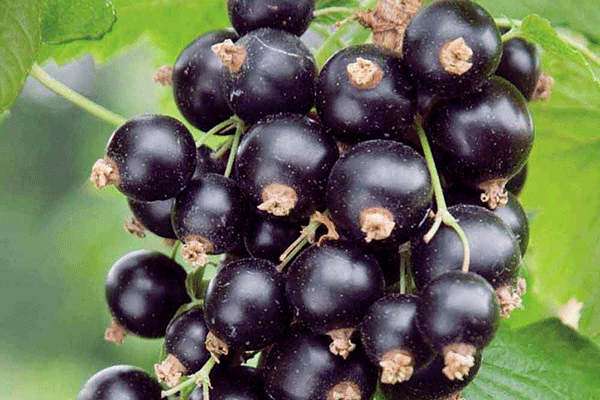We certainly have vegetable gardens for the sake of our stomachs. But how many of us consider growing trees and shrubs for what we can gather and eat? It takes longer to reap the harvest, but once they start producing, they just keep going.
Consider Native Edibles
Many of the best options are native plants that will feed and support pollinators and other wildlife while still producing an abundance for humans. At the same time, they’ll be providing shade, wind protection, structure and beauty to our landscapes and many seasons of interest—from spring blossoms to fall color to winter structure.
Note: For most edible woody plants, it’s best to plant more than one to increase pollination and fruit production.
Currant or Ribes grows just 2-3 feet high, making a colorful fall hedge. Clusters of small, white, bell-shaped flowers in spring are followed by edible purple berries that can be harvested mid to late summer and eaten fresh or dried and in baked goods, sauces or jellies.
Pawpaw, Asimina triloba, is a small native tree with large, tropical-looking leaves that turn lemon yellow in fall. It produces stubby banana-like fruits that are high in potassium, iron and calcium. The fruit tastes of banana, vanilla custard, pineapple and mango. It can be eaten fresh or in quick breads, cookies or muffins.
Persimmon, Diospyros virginiana, grows 35-50 feet high and tends to sucker, making it ideal for erosion control. It develops sweet 1-2 inch orange fruits tasting somewhat like dates or mangos. They need to freeze some before picking to soften the otherwise astringent taste. The pulp can be used in baked goods, syrups and jellies and ice cream. Its usefulness doesn’t end there as the seeds can serve as a coffee substitute and the leaves can be brewed for a tea.
American Hazelnut, Corylus americana. This thicket-forming shrub is native to woodland edges and stream banks in southeastern Nebraska. At one time hazelnuts were so numerous on the wooded bluffs of the Missouri and Platte rivers that families would go “nutting” each autumn. Today few hazelnuts can be found in the wild, but fortunately they make an attractive large shrub worthy of planting in your back yard. Nutritious, high calorie hazelnuts can be used in baked goods or with vegetables or meat.
Black Walnut, Juglans nigra, can be used in candies, caramels, baked goods, ice cream and to complement baked squash and yams. They should be harvested while the husks are still green but somewhat soft. Walnut husk stains are hard to get rid of, so wear rubber gloves or boots (rolling them under your foot will loosen the husk) to remove the husks. Nutmeats are ready to use after curing for about a month. The Nebraska Nut Growers Association has resources, tips and recipes for growing nuts regionally.
Nebraska Statewide Arboretum is a nonprofit that works toward sustainable home and community landscapes through initiatives in education, public gardens and the environment. Plant and landscape resources at http://plantnebraska.org.

